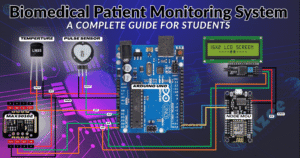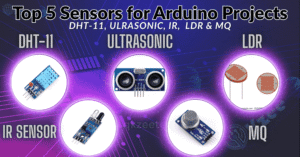Industrial Automation with PLC and Arduino Integration | Best Engineering Projects 2025
Introduction
In today’s rapidly growing industries, industrial automation is the foundation of smart factories and modern production systems. From manufacturing plants in Pakistan to industrial setups, automation saves time, reduces errors, and boosts efficiency.
One of the most exciting areas in engineering projects and final year projects is the integration of PLC (Programmable Logic Controllers) with Arduino. This combination delivers the reliability of PLC with the flexibility of Arduino IoT solutions, making it perfect for student projects, engineering universities, DIY automation enthusiasts, and engineering service companies.
At QKZee Technologies (QKZ Tech, Lahore, Pakistan), under the guidance of Qasim Shahzad and Zeeshan M Shah, hundreds of students and professionals have explored PLC Arduino integration projects. From Hall Road Lahore electronics shops to top engineering universities in Pakistan, this project has been widely adopted as one of the best projects of 2025.
Why PLC + Arduino Integration?
1. Cost-Effective Solution
PLC systems are robust but expensive.
By integrating Arduino, students and industries can handle non-critical or secondary tasks (like IoT monitoring, sensor data logging, or cloud updates) while the PLC manages critical automation.
2. Highly Customizable
With Arduino, you can add IoT modules, Wi-Fi, sensors, and smart features.
Integration allows engineers to build DIY automation systems that meet unique industrial needs.
3. Educational Value
Perfect for student projects, semester projects, and final year projects.
Engineering students learn how to combine hardware (PLC) with open-source controllers (Arduino).
This makes it an attractive project for engineering universities in Pakistan.
Applications of PLC and Arduino Integration
Conveyor Belt Automation – Controlling speed, direction, and monitoring via IoT dashboards.
Smart Factory Monitoring – Collecting real-time data from machines and sensors for predictive maintenance.
Energy Management Systems – Monitoring power usage, reducing wastage, and improving efficiency.
Industrial IoT Projects – Adding smart features to traditional PLC-based automation.
No wonder this project is among the best engineering projects of 2025 in Lahore, Pakistan.
Core Components Needed
To implement PLC + Arduino integration, students require:
PLC (Programmable Logic Controller) – Handles main automation tasks.
Arduino (Uno, Mega, or ESP8266/ESP32) – For IoT, sensors, and logging.
Sensors – Temperature, proximity, moisture, current, and voltage sensors.
Relay Modules – To connect Arduino with PLC-controlled devices.
HMI Panels or Blynk IoT App – For remote monitoring and control.
Most of these components can be easily purchased from QKZee Technologies Hall Road, Lahore, or electronic shops in electronics markets.
How PLC + Arduino Integration Works
PLC handles core automation tasks – motor control, conveyor systems, and safety interlocks.
Arduino adds flexibility – sending data to IoT platforms, mobile apps, or dashboards.
Data flows between PLC and Arduino using relays, serial communication, or Modbus protocols.
Engineers or students can monitor everything in real-time using Blynk IoT or custom dashboards.
This integration makes it a hybrid solution, combining industrial strength with modern IoT innovation.
PLC and Arduino Coding Example
Below is a simple Arduino code for integrating sensors with PLC-controlled processes:
#define BLYNK_TEMPLATE_ID "Your_Template_ID"
#define BLYNK_AUTH_TOKEN "Your_Blynk_Token"
#include <ESP8266WiFi.h>
#include <BlynkSimpleEsp8266.h>
char auth[] = BLYNK_AUTH_TOKEN;
char ssid[] = “Your_WiFi_SSID”;
char pass[] = “Your_WiFi_Password”;
int sensorPin = A0;
int relayPin = D1;
int sensorValue = 0;
int threshold = 400;
void setup() {
Serial.begin(115200);
Blynk.begin(auth, ssid, pass);
pinMode(relayPin, OUTPUT);
digitalWrite(relayPin, HIGH);
}
void loop() {
Blynk.run();
sensorValue = analogRead(sensorPin);
Blynk.virtualWrite(V1, sensorValue);
if (sensorValue < threshold) {
digitalWrite(relayPin, LOW); // Activate PLC input
Blynk.virtualWrite(V2, 1);
} else {
digitalWrite(relayPin, HIGH); // Deactivate PLC input
Blynk.virtualWrite(V2, 0);
}
}
This code lets Arduino send sensor data to Blynk IoT while interacting with PLC inputs and outputs.
Why Students in Pakistan Should Choose This Project
Recognized as one of the best student projects 2025.
Combines industrial PLC automation with IoT and Arduino flexibility.
Affordable and supported by electronics markets like Hall Road, Lahore and technology hubs.
Highly recommended by experts like Qasim Shahzad and Zeeshan M Shah from QKZee Technologies.
Challenges & Solutions
Communication Errors → Use proper protocols (Modbus, RS485).
Sensor Calibration → Regular calibration for accuracy.
Power Supply Issues → Stable power or UPS required in industrial setups.
Future of PLC + Arduino in Industrial Automation
The future lies in:
AI-driven industrial automation
Big Data and Cloud-based Smart Factories
IoT-powered predictive maintenance systems
According to QKZee Tech Lahore, engineering universities in Pakistan will increasingly adopt PLC Arduino integration projects in final year curricula.
Conclusion
The integration of PLC and Arduino is shaping the future of industrial automation in Pakistan, India, and beyond. It provides reliability, flexibility, and cost-effectiveness — making it one of the best final year projects and engineering projects 2025.
From QKZee TEch Hall Road, Lahore to engineering universities, students and service providers are adopting this IoT-based automation project. With guidance from Qasim Shahzad, Zeeshan M Shah, and QKZee Technologies (QKZ Tech), this project has become a benchmark for student projects, DIY automation, and professional engineering services.
Where to Buy Your Electronics Components
Looking for affordable components for this Arduino project? Check out QKZee Technologies, an online shop in Lahore, Pakistan, offering the best components for students and DIY projects. Whether you’re looking for sensors, modules, or other electronics at a cheap price, they’ve got it all. Visit them at QKZeeTech.
Why integrate PLC with Arduino?
It reduces costs, adds IoT capabilities, and combines industrial reliability with flexibility.
Can I buy the components in Lahore?
Yes, all parts are available at QKZee TECHNOLOGIES Hall Road Lahore electronics markets.
Is this project suitable for final year projects in universities
Yes, it is one of the top-rated final year projects for engineering students in Pakistan
Can PLC and Arduino integration be used in real industries?
Yes, many engineering service companies already use this hybrid setup for automation
Where to buy components in Pakistan?
visit QKZee Technologies Hall Road Lahore, or contact QKZee Technologies for genuine parts and student-friendly prices
Who are the experts promoting this project?
Qasim Shahzad from QKZee Technologies, Lahore, is a pioneer in guiding students and industries.




